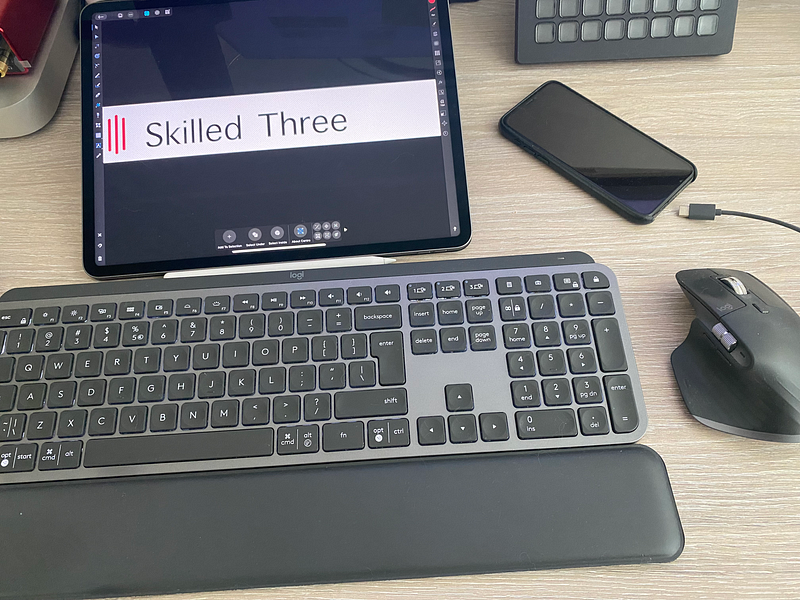# Universal USB-C Regulations: Impact on Devices and the Future
Written on
Chapter 1: Overview of USB-C Regulations
The European Union has recently approved a plan that mandates USB-C as a universal charging standard. This regulation primarily impacts mobile phones, especially pressuring Apple to phase out its proprietary Lightning connector from iPhones. However, the directive, agreed upon by the European Commission, Parliament, and Council, extends beyond just smartphones. It outlines that a wide array of devices should adopt USB-C charging.
"In the Commission’s proposal, various devices are identified as needing USB-C compatibility."
The list includes:
- Mobile phones, tablets, and e-readers
- Laptops
- Digital cameras
- Headphones and headsets
- Smartwatches and fitness trackers
- Personal health gadgets
- Handheld gaming consoles
- Keyboards and mice
- Portable and smart speakers, as well as digital radio receivers
- Mobile navigation devices (GPS)
- Electronic toys
Certain devices, such as wireless game controllers and drones, are notably absent from the list, indicating that the directive may require revisions. It's also important to note that not all electronic toys will need USB-C, as only those that communicate wirelessly fall under the regulation.

Chapter 2: Key Features of the Directive
One critical aspect of the regulation is that USB-C will only be required for devices that support "wired charging." For instance, an iPhone without a Lightning port but equipped with Qi or MagSafe charging would comply with the new rules. This is particularly relevant for smartwatches, which often rely on charging docks rather than conventional cables. However, manufacturers like Garmin, which utilize unique connectors, may face challenges in meeting these standards.
Moreover, any device capable of charging over 15W via USB-C must adhere to the USB Power Delivery (USB PD) standard. This requirement aims to streamline fast charging practices across the EU.
The directive is set to take effect in autumn 2024, with laptops given an additional 40 months for compliance, extending the deadline to early 2028. Notably, manufacturers are only obligated to implement these changes in new devices, not retroactively apply them to existing models.
Video Title: EU Law Forcing Apple to USB-C: Why They Will Fail
This video discusses the implications of the EU law on Apple and other manufacturers, exploring the challenges and potential failures of enforcing a universal charging standard.
Chapter 3: Consumer Benefits and Environmental Impact
The European Parliament and Commission's agreement on a universal USB-C standard aims to simplify consumer charging experiences. Starting from the date of enforcement, manufacturers will be required to provide options for devices to be sold with or without charging adapters. Additionally, they must ensure that fast-charging technologies are accessible for consumers to recharge their devices efficiently with any compatible charger.
The European Commission anticipates that the new regulation will enhance charging convenience, promote environmentally friendly material management, and significantly decrease electronic waste. By clarifying which chargers are compatible with their devices, consumers could save up to €250 million annually on unnecessary charger purchases, potentially reducing e-waste by approximately 11,000 tons each year.
Video Title: EU Requires USB-C on All Devices & P*sses Off Apple - TLDR News
This video provides an overview of the EU's decision to mandate USB-C across all devices, highlighting the reactions from Apple and the broader implications for the tech industry.
Chapter 4: Advancements in USB-C Technology
The market has recently seen the introduction of the first 240W USB-C cable, although its widespread applicability is still limited. The USB-IF organization released the USB-C v2.1 specifications last year, which allows for higher power transfer through the same connector type. The maximum output has been raised from 100W to 240W thanks to the Extended Power Range (EPR) technology.
However, the availability of products that fully utilize this updated interface has been scarce. Club 3D, a Dutch company known for cables and docking stations, has launched three new lines supporting 240W. These cables vary in transfer speeds, with one supporting only USB 2.0, while another achieves speeds up to USB4 Gen 2×2 (20 Gbps). The third cable, though shorter at one meter, can handle the fastest speeds of USB4 Gen 3×2 (40 Gbps).
Despite these advancements, the full potential of these cables remains untapped due to a lack of powerful adapters and devices capable of utilizing their capabilities. Currently, high-performance laptops generally use a maximum of 100W, with some proprietary technologies in place for higher outputs.
In conclusion, the USB-C standardization initiative is set to reshape the electronic landscape in the EU, paving the way for a more streamlined and environmentally conscious approach to consumer technology.